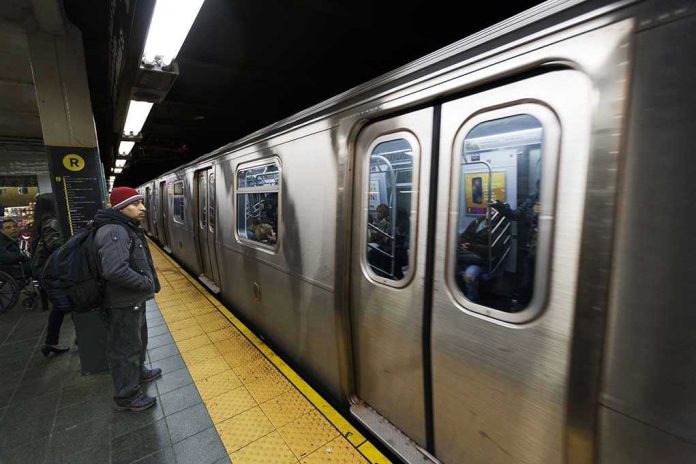
The Trump administration just pulled the plug on a $26 million boondoggle that epitomizes everything wrong with government waste—a Baltimore-DC maglev train project that burned through taxpayer dollars for nearly a decade with absolutely nothing to show for it.
Story Highlights
- Trump administration cancels $26 million funding for Baltimore-DC maglev train project after decade of failed planning
- Transportation department admits project has “nothing to show for it” despite years of studies and stakeholder meetings
- Systematic failures in U.S. infrastructure projects reveal chronic underfunding, regulatory burdens, and fragmented governance
- Pattern of stalled transportation initiatives undermines public trust and wastes taxpayer resources
Another Government Money Pit Gets the Axe
President Trump’s transportation department delivered a much-needed reality check this week, officially terminating funding for a maglev train project that has been bleeding taxpayer money since 2015. The high-speed rail initiative connecting Baltimore and Washington D.C. represents everything conservatives have been screaming about for years—government bureaucrats throwing good money after bad while delivering zero results to the people footing the bill.
Cutting pork oink oink oink oink 🐖 🐷 🐖 🐷
> Trump Admin Cancels $26 Million Funding for Baltimore-DC Maglev Train Project https://t.co/NssTzYNtbj
— Chris Abraham (@chrisabraham) August 3, 2025
This isn’t just about one failed project. It’s about a broken system where unelected bureaucrats can burn through $26 million of your hard-earned tax dollars without any accountability whatsoever. While American families struggled with Biden-era inflation and skyrocketing costs, government agencies were hosting endless “stakeholder meetings” and producing fancy reports that accomplished absolutely nothing.
The Swamp’s Favorite Game: Endless Planning, Zero Results
The maglev project launched during Obama’s second term and somehow survived the entire Biden administration despite producing zero tangible outcomes. For nearly ten years, this initiative consumed resources through multiple studies, preliminary designs, and bureaucratic reviews while regular Americans watched their infrastructure crumble. The disconnect between government planning and actual results has reached absurd levels.
Transportation experts consistently identify the same culprits behind these failures: fragmented governance structures where nobody takes responsibility, regulatory burdens that strangle innovation, and funding mechanisms designed more to employ consultants than build infrastructure. Metropolitan Planning Organizations coordinate with federal agencies who coordinate with state departments who coordinate with local governments—and somehow nothing ever gets built.
Why Conservative Governance Works
The Trump administration’s decisive action to cancel this wasteful project demonstrates exactly why conservative governance principles matter. Instead of throwing more money at a failing initiative, they cut their losses and redirected resources toward projects that actually serve American citizens. This is called fiscal responsibility—a concept completely foreign to the previous administration.
Private sector involvement could have transformed this project from a bureaucratic nightmare into an efficient transportation solution. When companies risk their own capital, they deliver results or face bankruptcy. When government agencies risk taxpayer money, they face no consequences for failure. The fundamental incentive structures explain why private enterprise succeeds where government consistently fails.
The Real Cost of Government Incompetence
Beyond the $26 million directly wasted on this project, consider the opportunity costs. Those funds could have repaired existing roads, upgraded airports, or reduced the national debt. Instead, they disappeared into the administrative state’s black hole of studies, committees, and planning sessions that generate nothing but more studies, committees, and planning sessions.
This pattern extends far beyond transportation projects. Academic research confirms that fragmented governance and regulatory complexity systematically prevent infrastructure modernization across the United States. While other nations build high-speed rail and modern airports, America gets stuck in environmental impact studies and community engagement processes that never end.
Sources:
Iteris, Inc. – A Comprehensive Guide to Transportation Planning
McNeil Engineering – The Future of Transportation Infrastructure: Innovations and Challenges
Transport Geography – Urban Transport Challenges
Manhattan Institute – At a Crossroads: U.S. Transportation Faces a Challenging Route Ahead
U.S. Department of Transportation – The Transportation Planning Process Key Issues






